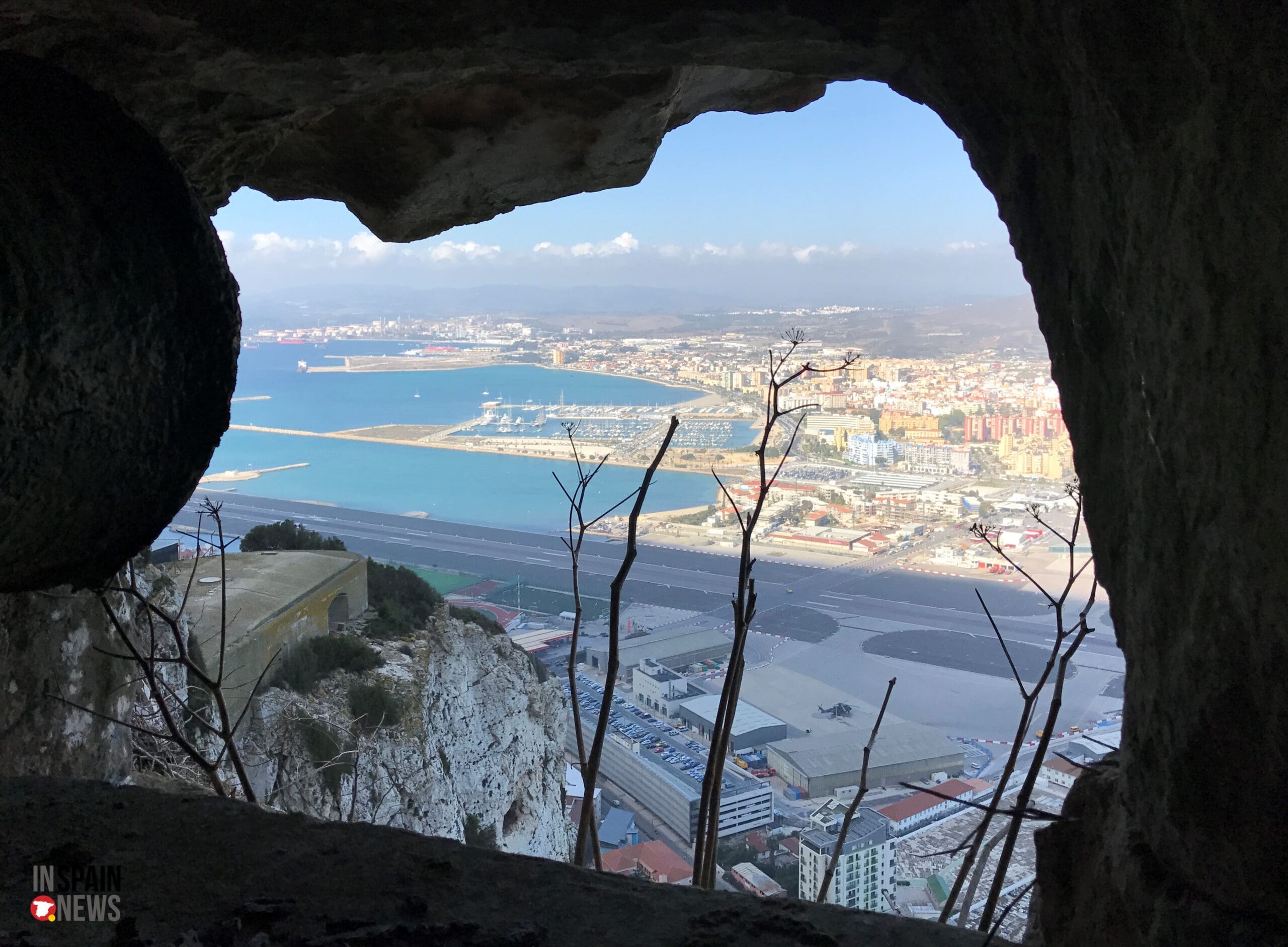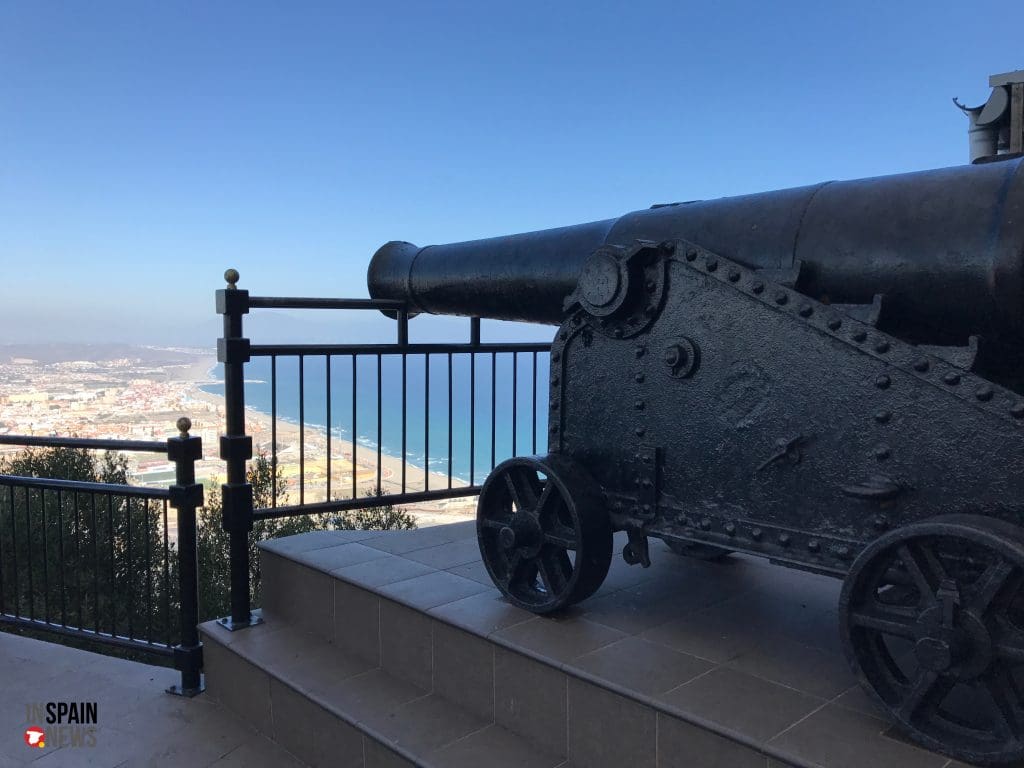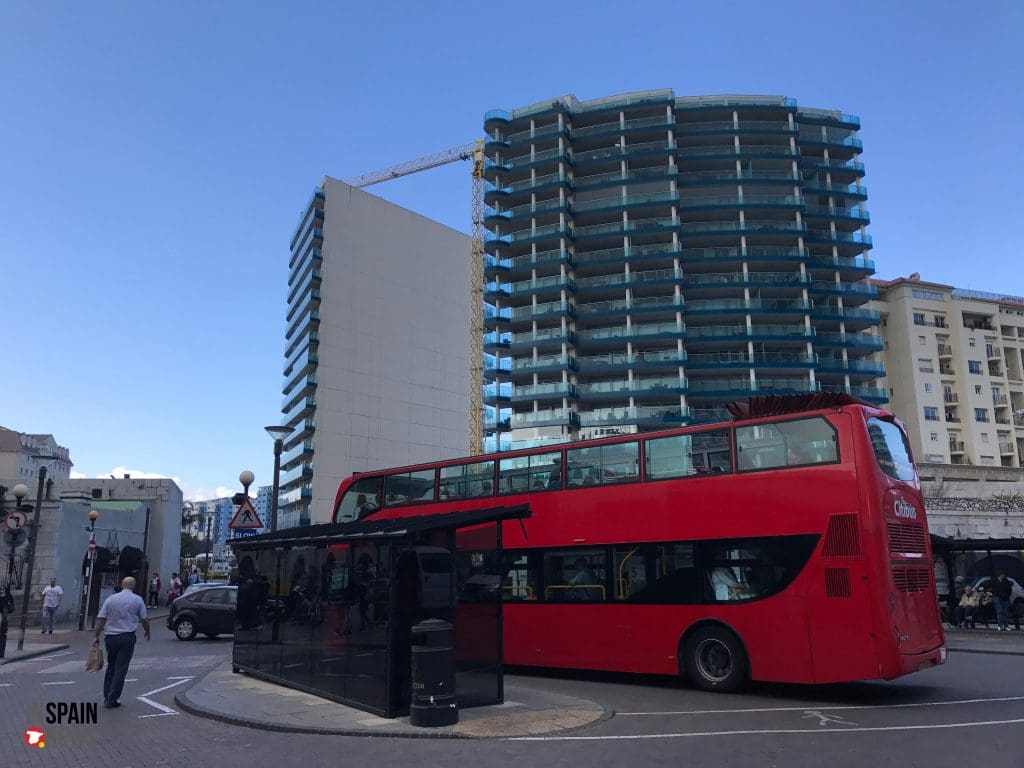Hundreds of Barbary apes live on a rock where bloody battles have been fought. Visit these old-world monkey species or take a look in the beautiful cave of St. Michael or visit ‘Tax harbour Gibraltar.
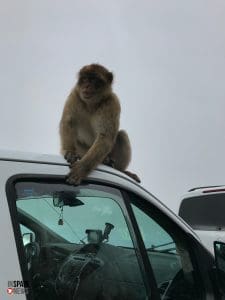
“Are you going to monkey watch?” is often the first reaction when you say you go to Gibraltar. And yes, monkeys can certainly be seen and felt if one unexpectedly jumps on your head. But fascinating military testimonies of turbulent history, a beautiful cave, and breathtaking views also await you.
British Overseas Territory
But Gibraltar is not just about monkey watching. Also, red double-decker buses, red telephone booths and real Bobby’s under a steel blue sky in summer temperatures. As Gibraltar is a British Overseas Territory, you will need your passport to enable you to cross the border. It is best to park your car in the Spanish municipality of La Linea de la Concepción next to the border. This costs between €6-12 for a half to a full day. Then simply walk across the border. That in itself is a special experience because you walk across the runway of the airport. When a plane is just arriving or leaving, the traffic light turns red. And you can witness this spectacle from very close by.
Taxi, tour bus, or cable car
At the border, you can also book a tour through Gibraltar with the Gibraltar Taxi Association. This costs €30 euros or £25 per person. In just two hours, you can visit the Caves of Saint Michaël, the highest point of the rock, Ape’s Den and The Great Siege, and World War II tunnels.
If you prefer, you can visit all this on your own at your own pace. Take the bus to the centre for only €2. You can shop there duty-free or visit one of the many restaurants. You can even find traditional ‘fish and chips’.
Another option is to drive to the base of the cable car, which will take you up the rock. Alternatively, if you book a card in advance, it costs €25. This includes access to the nature reserve and associated attractions and a shuttle service to and from the border.
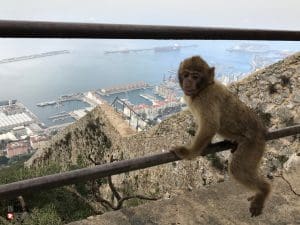
We went on the tour bus. Keep in mind that you get a maximum of 20 minutes per attraction. This is especially short in the kilometer-long tunnels, where you have to keep up the pace to see everything and get back to the bus in time, which you usually share with other tourists.
Busy and dull
The first impression upon entering Gibraltar does not immediately give us a ‘wow experience’. The streets of the English Crown Colony are pale at the foot of the recalcitrant rock. Many apartment buildings under construction or the paint peeling from the buildings are already there. All this, combined with the teeming crowds create a somewhat neglected look.
It is nice, however, that you hear English and Spanish spoken interchangeably on the street. With more than 34,000 inhabitants, Gibraltar is not only physically, but also historically inextricably linked to Spain. The crowds are mainly due to the many commuters from Spain who work there and day-trippers (more than 12 million tourists in 2016). But also the thousands of Moroccans who use Gibraltar as a transit port for their visits to Europe and vice versa. And finally, Spanish students who live in Gibraltar but have an English education. The rock takes up most of the peninsula of over 6.7 square kilometers.
Upper Rock Nature Reserve
The Upper Rock Nature Reserve is a protected area on the rock. Indeed, this is where most people go to watch the apes. In addition, however, there is plenty to do to keep you entertained for half a day or more.
But what about the apes exactly? They are Macaques and they are native to the Atlas Mountains of Morocco. They are the only wild apes in Europe. And they rule the rock. They are brutal, steal food from your bag and jump on your head without warning. There, they try to keep their balance by planting their nails in your skull. We even saw a clever monkey who, in search of more nuts, cleverly opened the sliding door of our bus. The driver managed to prevent the monkey from snuggling comfortably between us in the backseat by angry shouts and savage stamping. In addition to the quite aggressive adult apes, we also saw adorable baby monkeys that were sitting together on a fence with the shiny blue of the bay of Algeciras as a background.
Do not feed the monkeys
Note: there is a large fine for feeding the monkeys, but plenty of visitors let the animals grab something from their hands as it provides nice pictures for Facebook or Instagram. Still, they remain semi-wild animals, so be careful not to touch them. The animals are so spoiled and protected because in Gibraltar there is a superstition that as long as apes live on the rock, Gibraltar will belong to England.
Saint Michael’s Cave
The nature park is just like the rest of Gibraltar – a bit pale! The only thing that is not dull is the breathtaking view from the rock. Fortunately, that dominates wherever you are on the giant block of stone. While our van slowly drives up the rock in a queue of fellow vans, our panorama is gradually getting better. Container ships waiting outside the port of Algeciras start to look like matchboxes and Gibraltar shrinks into a kind of Madurodam at our feet. We see Africa and look out through the Strait of Gibraltar between the Pillars of Hercules.
The cave is very special. Inside, the jagged stalagmites and stalactites are quite impressive. The lighting is disco-like with alternating green, red, purple, blue, and yellow light for an extra dramatic effect. And classical music can be heard from speakers everywhere. To be honest, that produces more associations with a fairground attraction than with a true piece of art by Mother Nature. Saint Michael’s Cave is our first official stop.
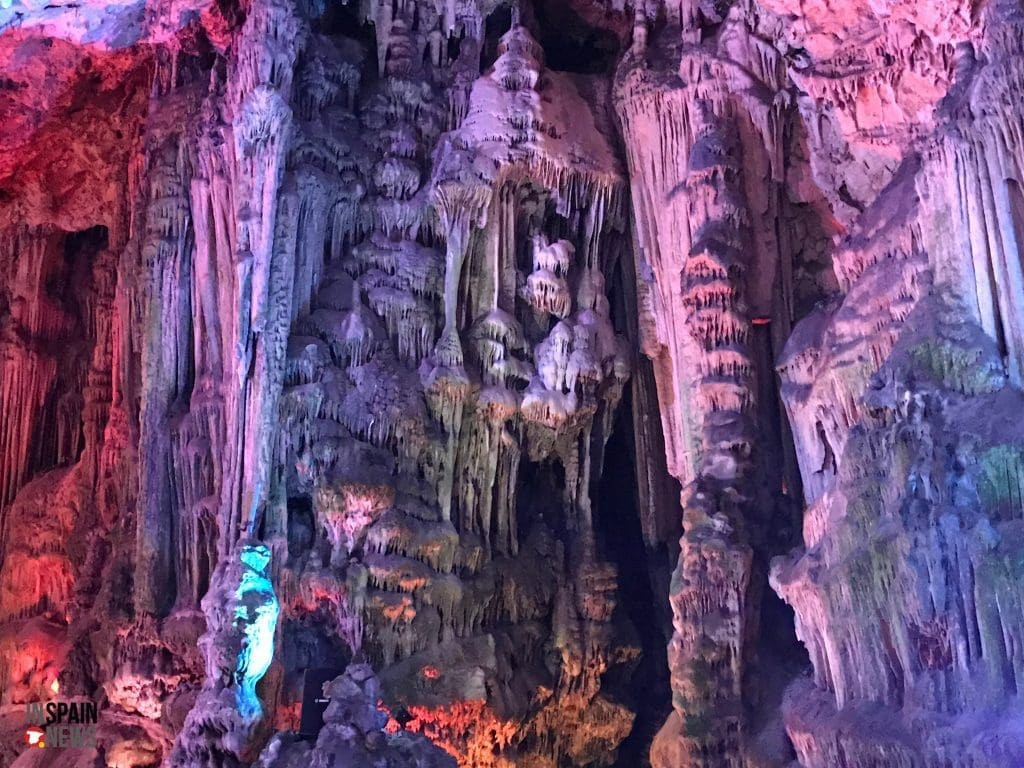
At the entrance, we see for the first time the spectacle that later becomes common: a monkey or a group of monkeys behind a hedge of photographing tourists. It remains a special sight. After all, we are not in a jungle.
The next stop is at the highest point of the rock (426m). Here you can climb up to a platform from where you can also look down on the back of the rock. Unfortunately, we don’t see anything because of a huge cloud. It is crawling not only with monkeys but also with tourists. Every now and then, screams can be heard when one of the monkeys uses someone’s head again as a springboard to cross the road or does something rude.
The tunnels
The last stop on our trip is at the Great Siege Tunnels which are approximately 30 miles long in total. They were cut on the north side of the rock by the British, who defended themselves from the bowels against the heavy attacks of Spanish and French forces during the last ‘Great Siege’ (the Great Siege) at the end of the 18th century.
Despite the fact that the British were busy with the American War of Independence at the time and therefore did not operate at full force, they managed to hold their own. Their attackers were bombarded with cannonballs through holes in the wall.
Impregnable fortress
A century and a half later Gibraltar found itself surrounded by enemies again. Winston Churchill and the British military leadership decided to expand the tunnels in the rock. Consequently, the rock became an impregnable fortress again. So now we walk in the footsteps of De Gaulle, Churchill, and friends in a walk through history. It is brought to life with full-size historical figures operating the cannons, sitting behind telexes, or lighting a fire. This gives you a somewhat realistic impression of the situation in which the soldiers found themselves here at the time. Everywhere you can look down through holes in the wall on Gibraltar, the airport, and Spain on the other side.
After all the sieges and tensions throughout history, there is still a tug of war around the boulder hanging from Spain. Great Britain is on one side and Spain on the other. No more war, but there are regular diplomatic tensions. The population wants to stay with England, but Spain wants the rock back.
The city
Most visitors come to the centre – just like us this time – no further than Main Street. Here it is teeming with tobacco and liquor stores, perfumery, jewellers, and shop windows full of digital trinkets. They are doing their utmost to win your money in a collective lure of flashy commercials and neon signs.
Tax haven
There is also no shortage of banks and exchange offices. We resist courageously. It is convenient that you can simply pay in euros instead of pounds. It’s cheap here for Brits. Gibraltar remains a bit of a tax haven, but Spaniards are not really better off on balance. The museum in the city is interesting if you want to know more about what has happened over the centuries in, on, and around the rock. The special part of England under the sun with a view of Africa and Spain certainly makes for an exciting day trip.
